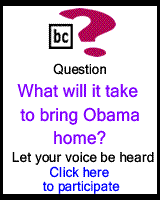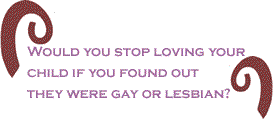|
|
| |
|
| |
|
| |
|
| |
|
| |
|
| |
Massachusetts is one
of the nation�s LGBTQ-friendliest states in the country.
And the state�s welcoming of us lesbian, gay, bisexual,
transgender and queer (LGBTQ) citizens is evident throughout
many of its private and public institutions, like churches,
businesses, workplaces, schools, colleges and universities,
to name a few.
 However,
according to a new study from Boston�s Children�s Hospital, published online July 21 on the American
Journal of Public Health website, when it comes to the
private institution of the home, our LGB youth are disproportionately
thrown out of theirs than their heterosexual peers. However,
according to a new study from Boston�s Children�s Hospital, published online July 21 on the American
Journal of Public Health website, when it comes to the
private institution of the home, our LGB youth are disproportionately
thrown out of theirs than their heterosexual peers.
While homelessness
of teen and youth populations are often attributed to
family neglect, family tragedy, poverty,
AIDS, drug abuse, eviction, or being aged out of foster
care, our LGBT teen and youth populations that are homeless
are, first and foremost, if not solely, because of their
sexual orientation. And sadly, it sends a message that
these homes would rather have no child than a queer
child.
�The high risk of
homelessness among sexual minority teens is a serious
problem requiring immediate attention,� says Heather Corliss,
PhD, MPH, of the Division of Adolescent and Young Adult
Medicine at Children�s Hospital. �Teens
with a sexual minority orientation are more likely than
heterosexual teens to be unaccompanied and homeless rather
than part of a homeless family�. These teens face
enormous risks and all types of obstacles to succeeding
in school and are in need of a great deal of assistance.�
Data from the 2005
and 2007 Massachusetts Youth Risk Behavior Surveys (YRBS),
which surveyed 6,317 Massachusetts public high school students in grades 9 through 12, reveal
the following:
- Among girls identifying
as lesbian, 22.5 percent were homeless without parental
or guardian supervision. Similar trends were found for
bisexuals and those unsure of their sexual orientation.

Unfortunately, not
assessed in the study is homelessness of the state�s transgender
population. However, previous studies have shown that
this population is at an even greater risk than its LGT
homeless youth, especially in communities of color.
According
to the National Gay and Lesbian Task Force report, �Lesbian,
Gay, Bisexual and Transgender Youth: An Epidemic of Homelessness�
released in June 2006, family conflict over a youth�s
sexual orientation or gender identity is the primary cause.
And because of a lesser intolerance for bisexual and transgender
youth, they are disproportionately at a higher risk of
becoming homeless.
As
a matter of fact, in June 2006, the Ali Forney Center
(AFC), in NYC, the nation�s largest LGBTQ youth homeless
services center, aggressively launched an advertising
campaign asking the simple question: �Would you stop loving
your child if you found out they were gay or lesbian?�
Carl Siciliano, Executive Director of the Ali
Forney Center, stated, �Our goal was to address
the rising rate of LGBT youth homelessness, particularly
in communities of color.�
Ali
Forney, for whom the center is named, was an African American
transgender known as �Luscious� and was also a throw-away.
And like many throw-aways Forney earned his living as
a prostitute. However, once stabilized with a roof over
his head Forney spent his remaining years dedicating his
time helping his peers.  But
on a cold wintry December night in 1997, at 4 a.m., a
still-unidentified assailant murdered Forney. Like most
bisexual and transgender youth they don�t expect to live
a long and fruitful life. But
on a cold wintry December night in 1997, at 4 a.m., a
still-unidentified assailant murdered Forney. Like most
bisexual and transgender youth they don�t expect to live
a long and fruitful life.
�I
believe that one day, the Lord will come back to get me.
Hallelujah.... all my trials and tribulations, they will
all be over. I won�t have to worry about crying and suffering
no more.... because my god, hallelujah is coming back
for me.� Forney recited at his favorite event of the year:
Talent Night at Safe Space, a program homeless youth in
NYC.
In
2007, when I wrote about homelessness of African American
LGBTQ youth, this is one of a typical response
I received from a blogger who read my piece on the BlackCommentator.com
website:
�Given that our resources
are tight & these youth are not at all psychologically
prepared for our liberation struggle, they are expendable.
Such are the realities of war. It�s gonna take all of
our resources to salvage the heterosexual youth, who will
hopefully form strong, loving, heterosexual relationships
& produce healthy children. This is how we will produce
a strong black nation/community. The dysfunctional youth
you are asking us to rescue cannot/will not be able to
make the contribution we need, so they are expendable.�
When we don�t accept
the belief that all of human life is of equal worth, but
rather promulgate the mean-spirited notion that some of
us are expendable, then those most at risk and at the
margins will always be deemed as society�s throw-aways.
 BlackCommentator.com
Editorial Board member, the Rev. Irene Monroe, is a religion
columnist, theologian, and public speaker. She is the Coordinator of
the African-American Roundtable of the Center for Lesbian and
Gay Studies in Religion and Ministry (CLGS) at the Pacific
School of Religion.
A native of Brooklyn,
Rev. Monroe is a graduate from Wellesley College and Union
Theological Seminary at Columbia University, and served
as a pastor at an African-American church before coming
to Harvard Divinity School for her doctorate as a Ford
Fellow. She was recently named to MSNBC�s list of 10 Black Women You Should Know. Reverend Monroe is the author
of Let Your Light Shine Like a Rainbow Always: Meditations on Bible
Prayers for Not�So�Everyday Moments. As an African-American
feminist theologian, she speaks for a sector of society
that is frequently invisible. Her website
is irenemonroe.com.
Click here
to contact the Rev. Monroe. BlackCommentator.com
Editorial Board member, the Rev. Irene Monroe, is a religion
columnist, theologian, and public speaker. She is the Coordinator of
the African-American Roundtable of the Center for Lesbian and
Gay Studies in Religion and Ministry (CLGS) at the Pacific
School of Religion.
A native of Brooklyn,
Rev. Monroe is a graduate from Wellesley College and Union
Theological Seminary at Columbia University, and served
as a pastor at an African-American church before coming
to Harvard Divinity School for her doctorate as a Ford
Fellow. She was recently named to MSNBC�s list of 10 Black Women You Should Know. Reverend Monroe is the author
of Let Your Light Shine Like a Rainbow Always: Meditations on Bible
Prayers for Not�So�Everyday Moments. As an African-American
feminist theologian, she speaks for a sector of society
that is frequently invisible. Her website
is irenemonroe.com.
Click here
to contact the Rev. Monroe.
|
| |
|
| |
|
| |
|
| |
|
| |
|
If you send
us an emaill message we may publish all or part
of it, unless you tell us it is not for publication.
You may also request that we withhold your name.
Thank you
very much for your readership.
|
| |
|
| |
|
| |
|
| July 28, 2011 - Issue 437 |
 is
published every Thursday
is
published every Thursday |
| Est. April 5, 2002 |
Executive Editor:
David A. Love, JD |
Managing Editor:
Nancy Littlefield, MBA |
Publisher:
Peter Gamble |
| |
|
| |
|
|
| |
| |
| |
| |
| |
| |
| |
| |
| |
| |
|
|

